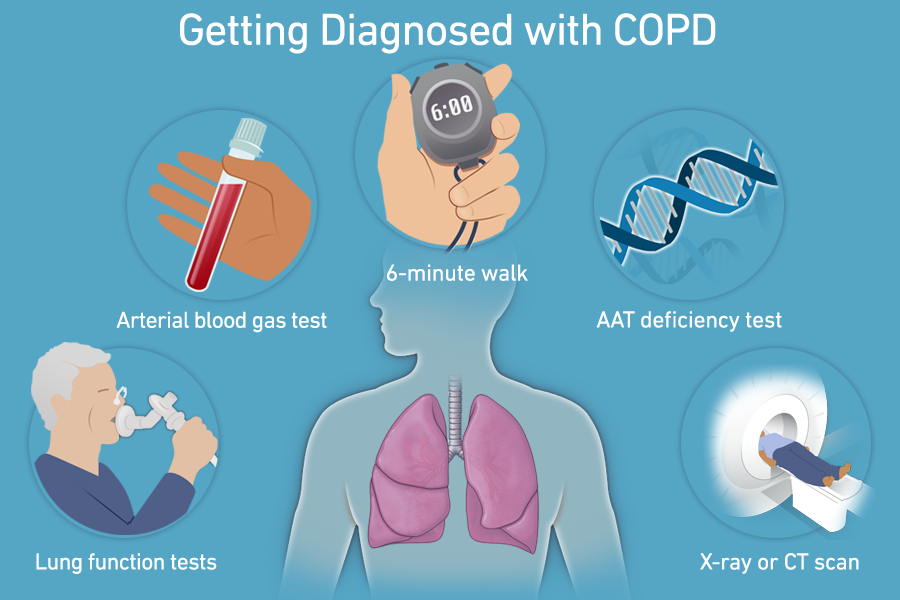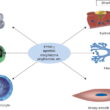COPD Differential Diagnosis
The Great Imitator: Differential Diagnosis Reveals COPD
Diagnosing chronic obstructive pulmonary disease (COPD) can be challenging. Coughing, wheezing, and shortness of breath are some of its symptoms that frequently coexist with other respiratory conditions. For this reason, it is essential to carry out a comprehensive differential diagnosis in order to determine the underlying cause of your breathing issues.Asthma, bronchiectasis, and other respiratory disorders are common mimics of COPD, and this blog post delves into their differential diagnosis.
Table of Contents

Key Distinctions Between COPD and Asthma
COPD Differential Diagnosis
Cause
- Both COPD and asthma are long-term respiratory conditions that restrict airflow, however they differ in a few key ways:
- The main causes of COPD include smoking and prolonged exposure to irritants.
Symptoms
- Exercise, irritants, and allergens can all cause asthma.
- Neutrophils are white blood cells that cause inflammation, and COPD is characterized by this type of inflammation.
Reversibility:
- For COPD patients, airflow restriction is mostly irreversible.
- Bronchodilators, or drugs that expand airways, can help partially reverse the restriction of airflow in asthma patients.
Age of Onset:
- COPD: Typically, people with a history of smoking experience the disease later in life (after age 40).
- Although it can strike at any age, asthma usually first manifests in childhood.
Tools for Diagnosis:
COPD Differential Diagnosis
An essential lung function test is spirometry. When bronchodilators are used, the Forced Expiratory Volume in One Second (FEV1) in COPD patients usually decreases and shows only slight improvement. On the other hand, FEV1 frequently significantly improves in asthma patients following bronchodilator therapy.
Airways Dilation in Bronchiectasis
COPD Differential Diagnosis
A disorder known as bronchiectasis causes the airways to permanently expand and deteriorate, resulting in an accumulation of mucus and a persistent cough. It has unique characteristics even though it can coexist with COPD.
Signs:
- copious volumes of mucus from a productive cough (usually green or yellow)
- recurring pneumonias in the chest
- Hemoptysis, or bloody coughing
Tools for Diagnosis:
- Airway abnormalities unique to bronchiectasis might be seen on a chest X-ray or CT scan.
Other Circulatory Disorders to Take Into Account
COPD Differential Diagnosis
- Heart failure: May result in dyspnea resembling COPD. An echocardiography can aid in distinction.
- Interstitial Lung Disease (ILD): A collection of illnesses affecting the lung tissue is known as interstitial lung disease (ILD). CT scans and chest X-rays can help in diagnosis.
- Tuberculosis: A contagious illness that can lead to weight loss, dyspnea, and coughing is tuberculosis. A chest X-ray and skin tests are performed in diagnosis.
The Value of Precise Diagnosis
COPD Differential Diagnosis
To choose the best course of action, a precise diagnosis is essential. This is the reason why:
- Customized Drugs: Certain drugs are needed for certain ailments. Getting an accurate diagnosis guarantees you get the best care possible.
- Preventing problems: Respiratory failure and other problems can be avoided with early detection and treatment of COPD.
- Enhanced Quality of Life: Receiving the right diagnosis and receiving effective treatment can make a big difference in your quality of life.
When to Consult a Physician
COPD Differential Diagnosis
See your physician if you suffer from chronic respiratory problems such as wheezing, shortness of breath, or cough. To reach a precise diagnosis, they might carry out a thorough assessment that may involve imaging scans, a physical examination, and lung function testing.
In summary
COPD Differential Diagnosis
Sometimes COPD presents itself as another respiratory condition. Gaining knowledge about the primary distinctions between COPD and its imitators, as well as the significance of an accurate diagnosis, gives you the ability to take control of your health and receive the best care possible for an improved quality of life.


